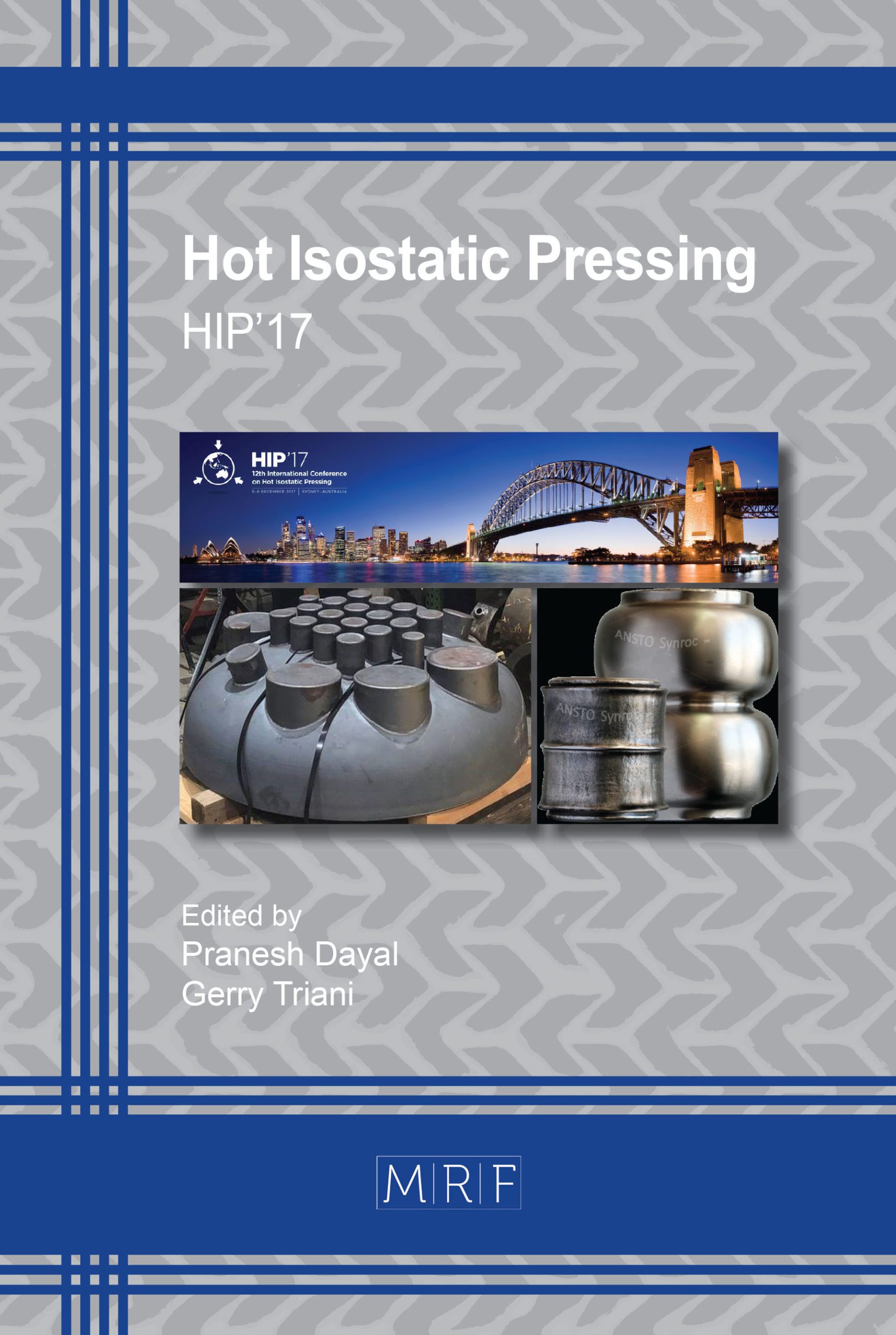Large-Scale and Industrialized HIP Equipment for the Densification of Additive Manufactured Parts
Hongxia Chen, Deming Zhang, Qing Ye
download PDFAbstract. Additive manufacturing technology has significant advantages in fabricating parts with complex shape, but the internal defects, such as residual stress, pores and microcracks, would result in critical problems under certain circumstances. To meet the requirement of HIP treatment on additive manufactured parts, we studied the thermodynamic behavior of the gas medium under high temperature and high pressure conditions, explored the deformation discipline of the thin-walled parts and the boundary conditions of controlling deformation, and optimized the process of eliminating residual stress. Based on the above work, a series of HIP equipment were specially designed for the treatment on additive manufactured parts, which could provide solid support for the development of additive manufacturing technology.
Keywords
Hot Isostatic Pressing (HIP), Additive Manufacturing, Temperature Uniformity
Published online 2/11/2019, 11 pages
Copyright © 2019 by the author(s)
Published under license by Materials Research Forum LLC., Millersville PA, USA
Citation: Hongxia Chen, Deming Zhang, Qing Ye, Large-Scale and Industrialized HIP Equipment for the Densification of Additive Manufactured Parts, Materials Research Proceedings, Vol. 10, pp 47-57, 2019
DOI: http://dx.doi.org/10.21741/9781644900031-7
The article was published as article 7 of the book Hot Isostatic Pressing
![]() Content from this work may be used under the terms of the Creative Commons Attribution 3.0 licence. Any further distribution of this work must maintain attribution to the author(s) and the title of the work, journal citation and DOI.
Content from this work may be used under the terms of the Creative Commons Attribution 3.0 licence. Any further distribution of this work must maintain attribution to the author(s) and the title of the work, journal citation and DOI.
References
[1] A. Rottger, K. Geenen, M. Windmann, et al. Comparison of microstructure and mechanical properties of 316 L austenitic steel processed by selective laser melting with hot-isostatic pressed and cast material, Mat. Sci. Eng. A, 678 (2016) 365-376. https://doi.org/10.1016/j.msea.2016.10.012
[2] I. Tolosa, F. Garciandia, F. Zubiri, et al. Study of mechanical properties of AISI 316 stainless steel processed by “selective laser melting”, following different manufacturing strategies, Int. J. Adv. Manuf. Technol., 51 (5) (2010) 639–647. https://doi.org/10.1007/s00170-010-2631-5
[3] M. Seifi, A. Salem, D. Satko, et al. Defect distribution and microstructure heterogeneity effects on fracture resistance and fatigue behavior of EBM Ti–6Al–4V, Int. J. Fatigue, 94 (2017) 263-287. https://doi.org/10.1016/j.ijfatigue.2016.06.001
[4] N. Hrabe, T. Gnäupel-Herold, T. Quinn. Fatigue properties of a titanium alloy (Ti–6Al–4V) fabricated via electron beam melting (EBM): Effects of internal defects and residual stress, Int. J. Fatigue, 94 (2017) 202-210. https://doi.org/10.1016/j.ijfatigue.2016.04.022
[5] B. V. Hooreweder, Y. Apers, K. Lietaert, et al. Improving the fatigue performance of porous metallic biomaterials produced by Selective Laser Melting, Acta Biomater. 47 (2017) 193-202. https://doi.org/10.1016/j.actbio.2016.10.005
[6] S. Tammas-Williams, P.J.Withers, I. Todd, P.B. Prangnell. Porosity regrowth during heat treatment of hot isostatically pressed additively manufactured titanium components [J]. Scripta Mater., 122 (2016) 72-76. https://doi.org/10.1016/j.scriptamat.2016.05.002
[7] M. W. Wu, P. H. Lai. The positive effect of hot isostatic pressing on improving the anisotropies of bending and impact properties in selective laser melted Ti-6Al-4V alloy, Mat. Sci. Eng. A, 658 (2016) 429-438. https://doi.org/10.1016/j.msea.2016.02.023
[8] B. Ruttert, M. Ramsperger, L. Mujica Roncery, et al. Impact of hot isostatic pressing on microstructures of CMSX-4 Ni-base superalloy fabricated by selective electron beam melting, Mater. Design 110 (2016) 720-727. https://doi.org/10.1016/j.matdes.2016.08.041
[9] M. M. Kirka, F. Medina, R. Dehoff, et al. Mechanical behavior of post-processed Inconel 718 manufactured through the electron beam melting process, Mat. Sci. Eng. A, 680 (2017) 338-346. https://doi.org/10.1016/j.msea.2016.10.069
[10] M. E. Aydinöz, F. Brenne, M. Schaper, et al. On the microstructural and mechanical properties of post-treated additively manufactured Inconel 718 superalloy under quasi-static and cyclic loading, Mat. Sci. Eng. A, 669 (2016) 246-258. https://doi.org/10.1016/j.msea.2016.05.089
[11] J. G. Zhang. Principle of Automatic Control, Harbin Institute of Technology Press, Harbin, 2003, pp. 129-158. (in Chinese)































